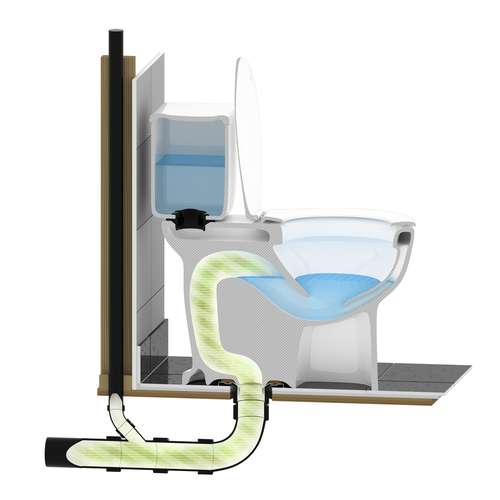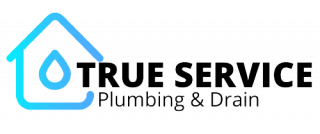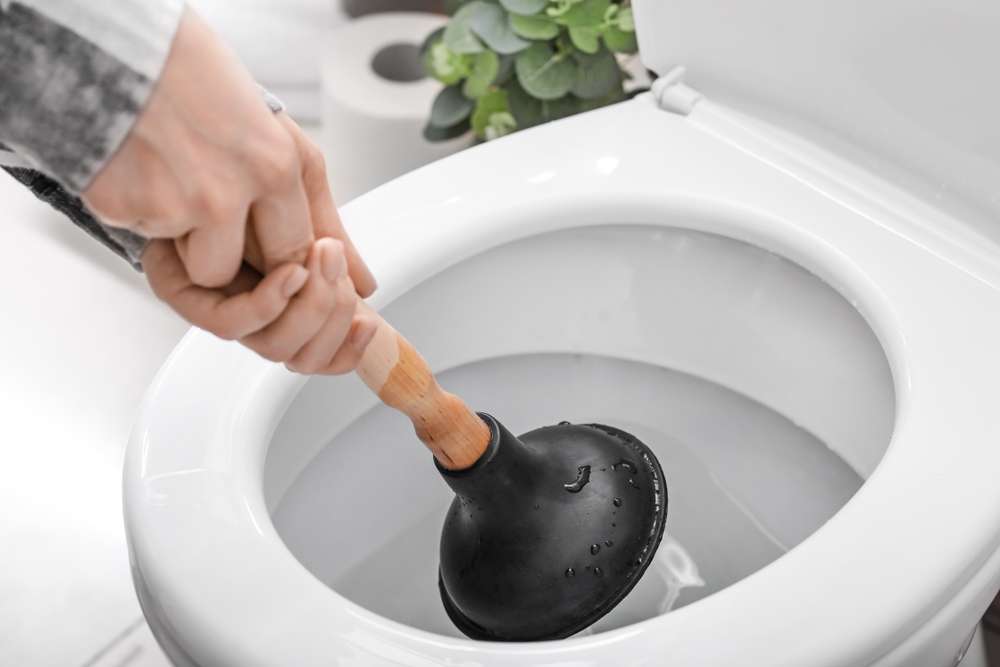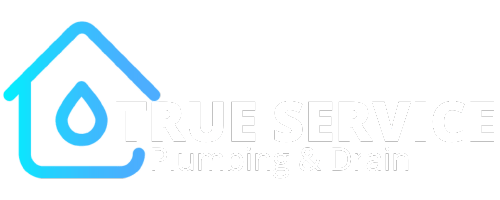Are you frustrated with your toilet constantly clogging? Understanding why your toilet keeps clogging can save you time, money, and a lot of headaches.
In this guide, we’ll explore the common causes of frequent toilet clogs, provide practical tips to prevent them, and discuss when it’s time to call in a professional plumber.
Causes of Toilet Clogs
Restroom clogs are a sign something is not right. The issue is generally together with your plumbing, restroom, or the effects that go down it.
When a toilet keeps clogging, the following are common causes:
- You have a low-flow toilet from a previous generation
- Flushing Items which are unflushable
- Excessive use of toilet paper
- Clogged trap in the toilet
- The toilet vent is obstructed
- Obstructed sewer main in your house
Older Low Flow Toilets
With early model low-flow toilets the fixture is often causing your toilet’s blockage. Older low-flow toilets lack the pressure to push waste through the trap and into the drain. Poor flushing pressure leaves particles behind, resulting in a jam.
What to do:
- Replace your outdated low-flow toilet to avoid clogs caused by insufficient flushing pressure. Reduce the amount of material you flush to help prevent toilet clogs if replacement is not an option.
- Low-flow toilets from the mid-1990s are first-generation devices. This makes them more susceptible to clogging. If you have an older model toilet, it’s time to search for a more recent one. A upgrade would improve flush pressure and prevent future blockages.
We can assist you with selecting and installing water-saving toilets in your bathrooms. Click here!
To Flush, or Not to Flush, That is the Question…?
Toilets are generally not designed to handle much beyond bio-waste and toilet paper. When you flush other types of material down the toilet, clogs become more likely. This form of recurring obstruction affects a wide range of households. What to flush can be confusing at times. Homeowners are often misinformed on what they can or cannot flush.
So-called “flushable” wipes are among the worst offenders nowadays. Some homeowners have developed the habit of flushing all bathroom waste. This includes waste like Q-tips, cotton balls, and other hygiene products.
In households with young children, non-flushables are a common blockage threat. Small toys like pieces of Lego or stuffed animals can find their way down the toilet.
What to do:
- Use a flanged plunger to dislodge a blockage that has formed owing to incorrect items in the drain. If this doesn’t work, break up the stuff and clear the drain with a toilet auger.
- Take the time to remind your family members of what should and should not go down the toilet drain.
- If you have younger children, teach them that the toilet is not a play area and that they should never flush their toys and other items down the toilet.
Excessive Use of Toilet Paper
Indeed, toilet paper was designed to travel down the drain without clogging. Yet, too much toilet paper flushed down prevents it from breaking up. This causes it to clump and stick in the toilet or drain lines, resulting in a clog.
Additionally, there are some brands of 2 ply toilet paper that have trouble dissolving completely, resulting in clogs. While it is both more convenient and cheaper to use, it can cause more trouble in your home.

What to do:
- When it comes to toilet paper, most people use 8 to 9 squares every wipe when 3 to 4 squares will suffice. Encourage family members to use less toilet paper to avoid clogs.
- Mark the proper length of toilet paper on the wall or cabinet down from the dispenser while potty training younger family members. This way, they’ll use the right amount every time.
- Rather than using ultra plus toilet paper, fold your sheets to achieve your desired thickness. When using toilet paper, fold it rather than ball it up, as this might cause clogs.
You can avoid many toilet clogs by being more conscious of how you use and dispose of your toilet tissue.
Toilet Trap Blocked
The P-trap on a sink is well-known, but did you realize that your toilet has one as well? The toilet trap is an S form that sits between the toilet bowl and the drain line, rather than a P shape.
The goal of the toilet’s trap, like that of a sink’s P-trap, is to catch material and prevent them from going into the drain line and causing a clog.
This is a common region of the fixture where items can get stuck. After flushing, excess waste, toilet paper, and non-flushable items may get stuck in the toilet trap. The toilet will continue to clog if there is a large bulk stuck in the trap, as flushed waste is more likely to catch and clog.
What to do:
- If you think there’s a clog in your toilet’s trap, try plunging the toilet to clear it out. To clear the clog, use a flanged toilet plunger to drive water into the trap.
If plunging does not clear the blockage, a toilet auger is another option.
- Push the auger into the toilet drain until you feel resistance; if you feel resistance below the drain, the toilet trap is most likely clogged. Rotate the auger to break up the plug material, then use your hands to pull the remaining debris out of the drain.
If you can’t get the clog to clear, it’s time to call a professional plumber for drain cleaning.
Toilet Vent Blockage
A vent connects your toilets that exits your home, usually through the roof. Fresh air enters your home through the toilet vent, increasing flush pressure.
The toilet loses flushing pressure if a toilet vent becomes blocked. With low pressure, the toilet clogs more and more, becoming a regular occurrence.
Other difficulties caused by a blocked toilet vent include gurgling noises from the toilet, poor drainage throughout the property, and sewage odors indoors.

What to do:
Toilet vents become clogged at their roof openings or where they connect to your home’s sewage system. When a toilet keeps clogging, the first thing you should do is check the roof for a blocked toilet vent.
- Use a ladder and a spotter to determine where the toilet vent penetrates the roof (it’s above where your main bathroom sits).
- Remove the vent cap to inspect the vent for any debris that may have gotten inside. Remove any debris that you can reach from the vent.
- Send water down the toilet vent using the spray nozzle on your garden hose. You can clear some obstructions this way. But if water continues to back up out of the vent aperture, the blockage has not gone through the line.
- Fit an auger into the restroom vent; if your auger is not at least 6 metres long or you likely won’t reach the vent/server line connection. Remove the auger after rotating it to blast through the obstacle.
- To verify that blockage is gone, flush some water down the toilet vent. If the water keeps backing up, you’ll need to call a plumber.
Sewer Line Blocked
Some blockages can be completely cleared from your plumbing fixtures and drains, but end up getting stuck in your home’s main sewer line. Clogs in the sewage system cause drainage issues throughout the home and are tough to fix on your own.
Sewer lines are often clogged by outdoor sources like tree root penetrations, sewer line breaks, and sewer line infiltrations. Because these issues affect drainage and your plumbing system’s ability to transfer the waste out of your home, your toilet will continue to clog. In this situation, sewer line repairs will be necessary.
What to do:
- Sewer line obstructions, unfortunately, need the services of a professional plumber. If you ignore sewage line blockages, your toilet will continue to clog, causing greater harm and damages to your home’s plumbing system.
- Contact a plumber to schedule drain cleaning services if you suspect a sewer line clog.
Free Up Toilet Clogs With True Service Plumbing
If toilet troubles continue to persist and you are unable to identify the main cause, time to call in the pros.
Our licensed plumbers will assess your home’s plumbing system and determine the root cause of your clogs, and perform the services necessary to resolve the issue.
From clogged toilets, line repairs, plumbing fixture installation and replacement, or a total bathroom renovation, True Service Plumbing has your back when it comes to all things plumbing.
Contact True Service Plumbing today to schedule a free estimate and consultation.


